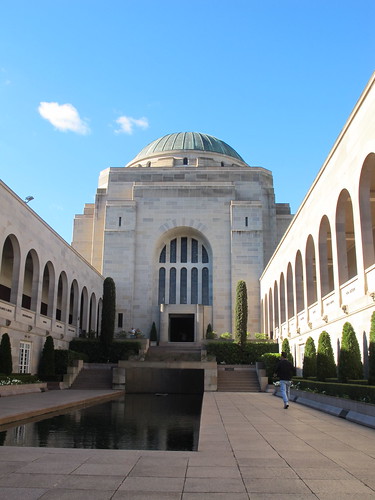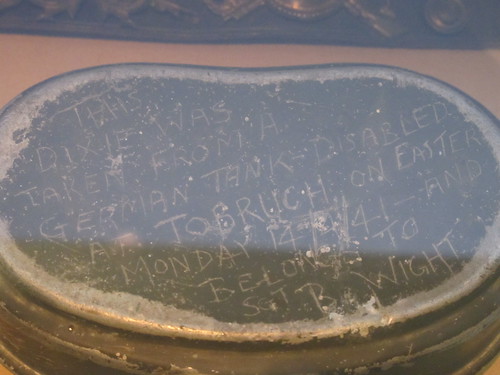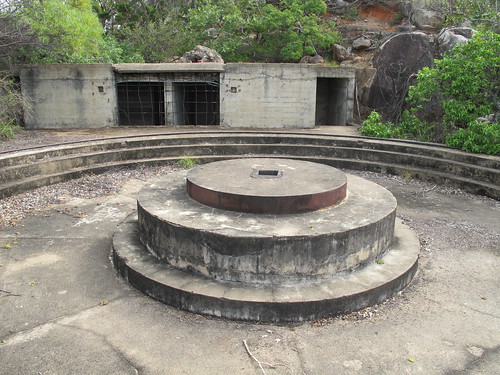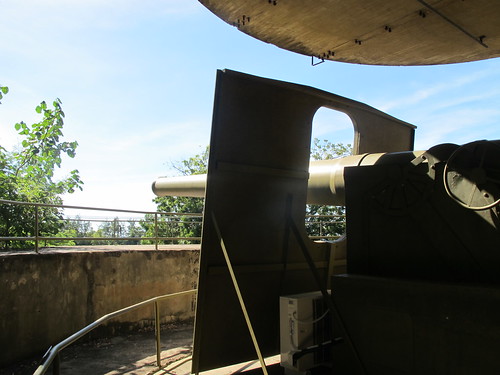Having spent the better part of April 2011 travelling across Australia, I had the opportunity to visit many historical sites dedicated to preserving the memory of that country’s War history. This Remembrance Day, my thoughts were primarily on the Canadians who have served and continue to serve in defence of our country, but I could not help but think about the sites I visited in Australia earlier this year.
As a Dominion of the British Empire, the Commonwealth of Australia experienced both similar and very different moments as Canada during the two World Wars (largely due to its geography). Over the course of my visit, I was amazed at how proudly Australians celebrated and honoured their soldiers through museums and the preservation of War sites.
While in Canberra, I visited the Australian War Museum, which puts our impressive Canadian War Museum in Ottawa to shame. I spent an entire afternoon in the museum in Canberra and I was hardly able to see one third of the exhibits. The giant museum focuses on Australia’s military history, spanning the Boer Wars, the First World War (notably during the Gallipoli Campaign), the Second World War, Vietnam War, the invasion of Iraq, the war in Afghanistan, and others. It is true that history is written by the victors, but this museum did not glorify war, it honoured those who gave their lives by capturing a wide story of war – not all of which anyone should be proud of – but is too important to be forgotten.

When walking through the Second World War section of the museum, I came upon a dixie (see photo below) taken by an Australian soldier fighting in Libya during the Siege of Tobruk. The inscription carved in the dixie is dated April 14, 1941, which was exactly sixty years to the day when I visited the museum (on April 14, 2011).

The siege of Tobruk began on April 10, 1941 when the city was attacked by German General Erwin Rommel and lasted until November 27, 1941 when Allied forces were relieved by the 8th Army. More than 3,000 Allied soldiers were killed during the siege (and more than 8,000 Axis soldiers) in what turned out to be a decisive victory for the Allied forces.

Later in the trip we visited Townsville in Queensland and took a ferry to the now tourist focused Magnetic Island. While on the island we climbed the steep paths of the island’s cliffs to the ramparts of Magnetic Battery.
The Magnetic Battery and the now ruined extensive encampment built on the hills of the island were part of the coastal defences constructed across Australia to combat the threat of Japanese attack and invasion. Between 1942 and 1943, Australia was attacked by the Japanese airforce nearly one hundered times (Townsville was bombed three times in July 1942).


We were camping somewhere in the depths of Kakadu National Park on ANZAC Day, but we did have the opportunity to visit war sites in Darwin when we returned to city.
In February 1942, 188 Japanese warplanes attacked Darwin, killing more than 250 people and sinking 45 Allied ships. While Darwin has recovered from the scars of the air raids, the memory is preserved in the historical sites, including this 9.2 inch Gun Emplacement near the Military Museum at East Point.

As a Canadian visitor, there were many things about Australia that were very familiar and many things that were very different. While the war in Afghanistan has bolstered Canadians public support for our military men and women, the level of national pride that Australians invest in honouring their military history was very different than what I was used to in Canada. From an outsiders perspective, the public institutions – museums, memorials, and historic sites – dedicated to honouring an important part of that country’s history is far above and beyond anything we have in Canada, and should be something that we should strive towards.

5 replies on “why i was thinking about australia on this remembrance day.”
Very well-written, insightful and moving post, Dave. Thanks for sharing your experiences in Australia.
Australia’s military history has a number of similarities to Canada’s, such as punching well above its weight in both the First & Second World Wars, as well as in Korea (did you know that the battalion that helped the Princess Pats hold Kapyeong was Aussie?); and also significant differences. For example, in the 2nd World War, Australia’s territory came under direct threat from the Japanese, while Canada’s territory has not been under serious threat of invasion since the last Yank went home in 1814. ‘Oz’ also chose to actively participate in the Vietnam War alongside the United States, while Canada stayed well out of it; the same applied more recently to Bush & Blair’s Iraq adventure.
Dave, what a poignant post. When I lived in the US I was surprised to learn than many Americans thought that WW2 started on Dec 8, 1941 because that’s when the US officially entered the fray. In reading your post and (jerrymacgp’s comment)I realized that I was just as short sighted about other countries, like Australia, whose wartime experience both mirrored and differed from our own. Thanks for broadening my perspective.
Thanks! I’m glad that you folks enjoyed the post!
Why IS an e mail required if it is never displayed? VERY STRANGE! Kapyong and the Princess Pats ..ohh yeahh..mmmmm also very strange , didn’t quite happen the way that many Canadian sites portray it. Go explore. In Iraq as much as any one may wish to say it was wrong, which it was and still is, only 3 countries initially formed the coalition, none were Canadian but one WAS Australian. The first to stop German and Japanese in WW2 – Australian. Australians suffered more percentage losses in bomber command in the RAAF than any other nation and led the pathfinder missions such as the bouncing bombs dambuster raids. Australian forces also mounted the last major amphibious attack of the 2nd ww. As well in the Pacific region of conflict MORE Japanese fighting forces were engaged in conflict by Australian forces than even US forces. I look at a lot of Canadian posts and sites to see what they say and am constantly amazed at how they do not tell a true story – really surprised at that.